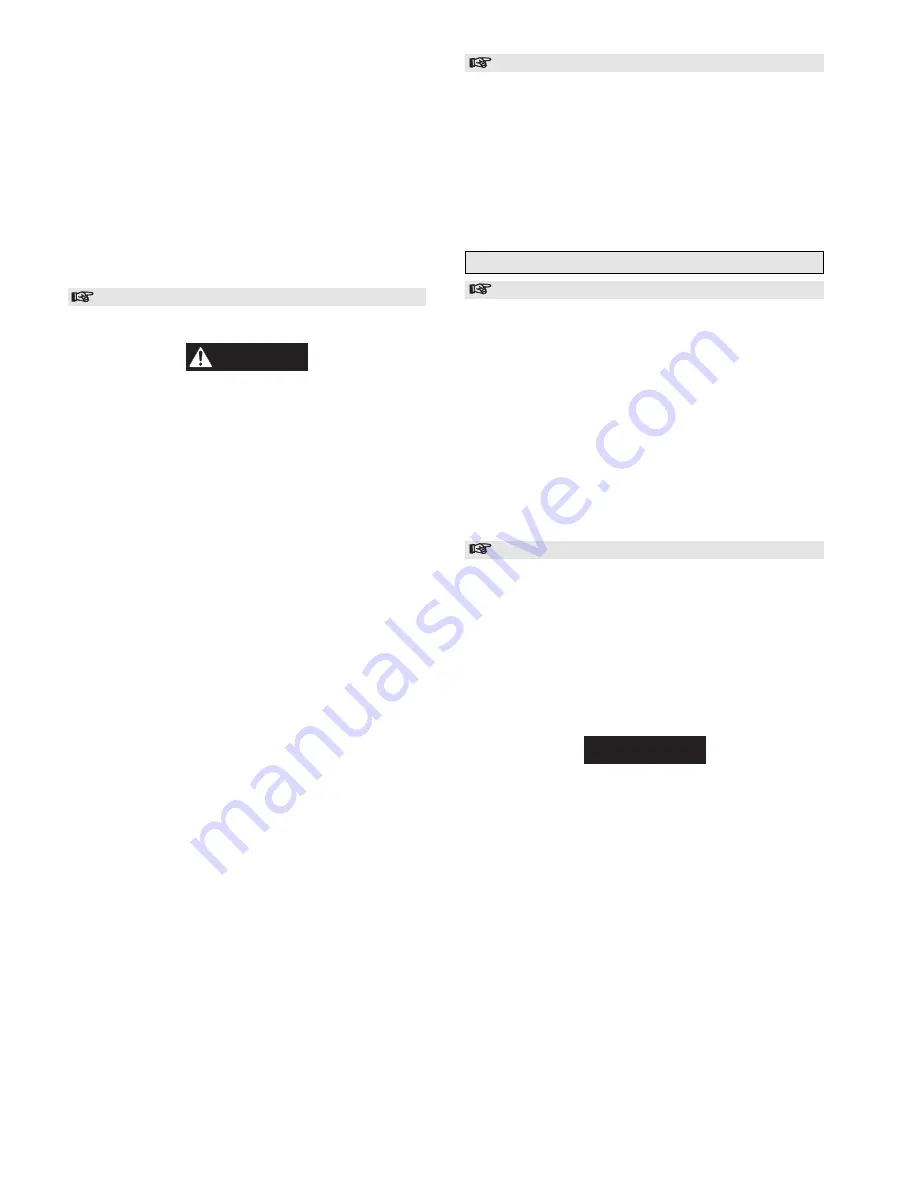
32
5.
Place spacer (105) between upper brake band flange and
bracket. Attach band assembly (104) to bracket (106) using
three capscrews (101), spacers (102) and spacer tubes
(103). Torque capscrews to 55 ft lbs (75 Nm).
6.
Install pivot bar (119) and capscrew (120) through lower
flange of brake band assembly (104). At lowest point of
threads, place a bead of Loctite
®
680 and install jam nut
(117) fully. Jam nut threads must become coated with
sealant. Install second jam nut (117) to approximately the
middle of the thread length. Thread capscrew (120) into
bottom of plunger (114) a minimum of five thread lengths.
Lock in place, against plunger, using jam nut (117). Adjust
brake as described in the ‘Drum Band Brake Adjustment’
section.
Adjusting Automatic Drum Band Brake
Refer to Dwg. MHP1281.
CAUTION
• This adjustment is done after a rebuild. It is only a rough
adjustment intended to remove major slack prior to
adjusting with a load.
This procedure can be done at a work bench using a 50 psig air
supply applied to the brake cylinder. After completion of this
procedure the brake must further be adjusted using the
recommended air supply and a test load.
1.
Insert a length of 3/8 inch NC threaded rod, fully into the
cylinder rod (108). With the brake band slack and no air
supplied to the brake, push the end of the threaded rod to
position the plunger all the way inside the brake bracket
(106). Place a nut on the threaded rod, and locate nut until
it is just touching the cover (125). Apply air to the brake.
The threaded rod should move out from the cylinder
approximately 1 inch (25 mm).
2.
Tighten capscrew (120) in plunger (114) to remove slack
from band brake. Release air pressure. The nut should
move closer to the end cover (125) and stop.
3.
Repeat step 1 until the nut stops at approximately 9/16 inch
(14 mm) from the cover (125).
4.
Refer to further adjusting in ‘Automatic Drum Brake
Adjustment’.
Drum Guard Assembly
Refer to Dwg. MHP0658.
1.
Place drum guard (590) on rear (drum brake side)
sideframe (64) with the longer inside tab located under the
sideframe edge and the smaller outside tabs located on top
of the sideframe edge.
2.
Place washers (593) on brackets (591). Install washers in
quantities required to remove any ‘play’ or gap between
drum guard and brackets.
3.
Align brackets (591) on mounting holes in uprights (26)
and (68). Secure in place with capscrews (592).
Testing
Operational Test
Prior to initial use, all new, altered or repaired winches shall be
tested to ensure proper operation.
1.
Check oil level in reduction gear assembly and disc brake is
correct. Top off levels as required before operation as
described in the “LUBRICATION” section.
2.
To initially ‘break in’ new or overhauled motors, operate
winch without load, in both directions, for 1 hour at 100 -
200 RPM.
3.
Check operation of brakes. Adjust if necessary as described
in the “MAINTENANCE” section.
4.
Check operation of limit switches, locking mechanisms and
all safety devices when equipped.
5.
Check foundation mounting fasteners are secure.
6.
Install drum guard.
Load Test
Prior to initial use, all new, extensively repaired, or altered
winches shall be load tested by or under the direction of a
person trained in safety and operation of this winch and a
written report furnished confirming the rating of the winch. Test
loads shall not be less than 100% of rated line pull at mid drum
and should not exceed 125% of the rated line pull at mid drum.
To test the winch at 125% of the rated load at mid drum apply
the following load:
FA2A-GMR Winch 125% Test Load
3,125 lb. (1,148 kg)
NOTICE
• Testing to more than 125% of rated line pull may be
required to comply with standards and regulations set forth
in areas outside the USA.










































